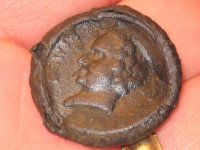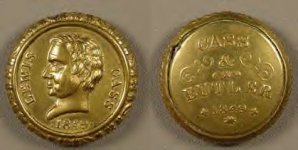Rodney,
You mentioned Andrew Jackson and the Indians. You are right in your assessment of Andrew Jackson having a major involvement with the Indians being moved, but there was infact another individual who had a major impact on the Indians and there survival. The Indians learned to trust this individual for his dedication and devotion for the survival of the Indian nations. This person was appointed by none other than...President Andrew Jackson to become an Ambassador to the Indian Nations. His name was Lewis Cass. What an extrodinary life this man had and the impact he had on the Indians. Reason I mention this man's name is because I found on this same hill a medal with his name and face and a date of 1849 on the medal. It is a very rare medal but banged up pretty bad. It could be worth $1 or $100 I really don't give a hoot because to me, this piece is priceless and I'll never sell it. The historical tie that it has to this region is far more valuable to me than monetary gain. I researched a little information on this guys pedigree, quite impressive. Here is the medal I found and also a non dug version of what the medal is supposed to look like new. Hope you enjoy this brief History lesson.
Cass, Lewis Britannica Concise
Print Article :: Email Article :: Cite Article
Lewis Cass
born Oct. 9, 1782, Exeter, N.H., U.S.
died June 17, 1866, Detroit, Mich.
U.S. politician.
He fought in the War of 1812 and served as governor of Michigan Territory (1813–31). As secretary of war (1831–36) under Pres. Andrew Jackson, he directed the conduct of the Black Hawk and Seminole wars. He served as U.S. minister to France (1836–42). In the U.S. Senate (1845–48, 1849–57), he supported westward expansion and the Compromise of 1850. He was the Democratic nominee in the presidential election of 1848, which he lost to Zachary Taylor. He later served as secretary of state (1857–60) but resigned when Pres. James Buchanan took no action to counter the secession of the Southern states.




